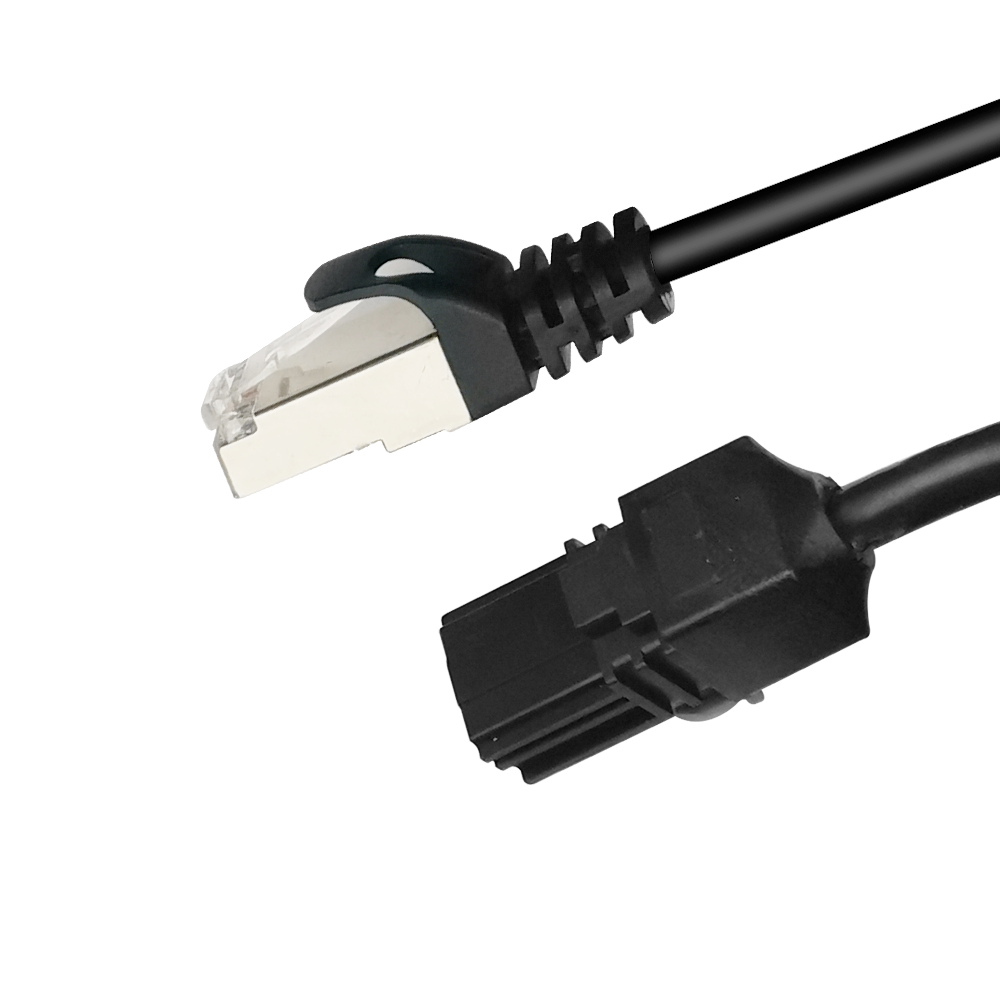Understanding RJ45 Pinout for Network Setup

Understanding RJ45 Pinout is crucial for anyone involved in network setup. RJ45 Pinout determines how data travels through cables. Proper configuration ensures efficient data transmission. Wiring color schemes play a vital role in this process. These schemes provide a standardized method for connecting wires. Following these standards prevents errors and maintains network reliability. Adhering to the correct wiring color scheme is essential for optimal network performance.
RJ45 Pinout and Wiring Color Schemes
Understanding RJ45 Pinout
Definition and significance
RJ45 Pinout refers to the arrangement of wires within an RJ45 connector. This configuration determines how data signals travel through the network cables. Proper understanding of RJ45 Pinout ensures efficient communication between devices. RJ45 cables play a crucial role in networking computers together. These connectors allow for fast data transfer and communication.
Overview of pinout configuration
The RJ45 Pinout consists of eight pins. Each pin has a specific function in transmitting data. The configuration follows a standardized pattern to maintain consistency. This standardization helps in preventing errors during network setup. Correct pinout configuration is essential for reliable network performance.
T568A vs T568B Wiring Color Schemes
T568B: The most commonly used standard
The T568B wiring color scheme is the most widely used in Ethernet networks. This scheme provides a consistent method for arranging wires in RJ45 connectors. The T568B standard ensures compatibility across different network devices. Following this scheme minimizes the risk of connectivity issues.
T568A: An alternative wiring scheme
The T568A wiring color scheme serves as an alternative to T568B. Some installations may prefer T568A due to specific requirements. This scheme offers flexibility in certain network setups. Understanding both schemes allows for informed decision-making in network design.
Importance of Following Wiring Color Schemes
Maintaining data communication speed
Proper adherence to wiring color schemes maintains optimal data communication speed. Consistent wiring ensures that signals travel without interruption. This consistency prevents data loss and enhances overall network efficiency.
Minimizing interference
Following standardized wiring color schemes minimizes interference in network cables. Proper arrangement of wires reduces the risk of signal crosstalk. This reduction in interference leads to clearer and more reliable data transmission.
Crossover Network Cable
What is a Crossover Cable?
Definition and purpose
A crossover cable connects two devices of the same type directly. This cable swaps the transmit and receive signals. The crossover cable allows devices to communicate without a hub or switch. The design ensures proper data transmission between similar devices.
Typical use cases
Crossover cables often connect two computers directly. These cables also link network switches together. Some older gaming consoles use crossover cables for multiplayer gaming. The cable serves as a simple solution for direct device connections.
Diminishing Need for Crossover Cables
Modern Ethernet hardware capabilities
Modern Ethernet hardware includes auto-sensing technology. This technology detects the type of connected device. The hardware adjusts the signal paths automatically. This capability reduces the need for crossover cables in many setups.
Automatic TX and RX switching
Automatic TX (transmit) and RX (receive) switching simplifies network connections. Devices with this feature handle signal direction internally. Users no longer need specific cable types for direct connections. This advancement increases flexibility in network configurations.
Essential Tools for Network Cable Setup and Testing
8P8C Plug
Description and usage
The 8P8C plug is a modular connector used in network cabling. This plug connects Ethernet cables to devices like routers and switches. The 8P8C plug features eight positions and eight contacts. These contacts ensure proper data transmission. You will find the 8P8C plug essential for creating custom-length cables.
Importance in network setup
The 8P8C plug plays a vital role in network setup. Proper installation ensures stable connections. Reliable connections maintain data integrity. You must use high-quality 8P8C plugs to prevent connectivity issues. Consistent performance depends on well-made connectors.
Crimping Tool
Functionality and types
A crimping tool secures the 8P8C plug to the cable. This tool presses the metal contacts into the wires. You will find various types of crimping tools available. Some tools offer interchangeable dies for different connectors. Others provide ratcheting mechanisms for consistent pressure.
How to use a crimping tool effectively
Using a crimping tool requires precision. First, strip the cable jacket to expose the wires. Arrange the wires according to the chosen wiring scheme. Insert the wires into the 8P8C plug. Use the crimping tool to secure the plug. Ensure the contacts pierce the wires for a solid connection.
Network Testers
Network Access Tester
A network access tester evaluates network performance. This device checks for connectivity issues. You can use a network access tester to identify bottlenecks. The tester provides valuable insights into network health. Regular testing helps maintain optimal performance.
Network Cable Tester
A network cable tester checks the integrity of cables. This tool identifies wiring faults and misconfigurations. You can use a cable tester to verify pinout accuracy. The tester ensures each wire connects correctly. Proper testing prevents future network problems.
Importance of testing in network setup
Testing plays a crucial role in network setup. Regular testing detects issues early. Early detection prevents costly downtime. Tools like Paessler PRTG Network Monitor enhance network monitoring. This software manages IT infrastructure efficiently. Advanced technologies optimize overall network quality.
Understanding RJ45 Pinout is crucial for efficient network setups. Proper pinout configuration allows devices to communicate at high speeds. Adhering to wiring standards ensures reliable data transmission. Using the right tools, like crimping tools and network testers, enhances network performance. These tools help maintain stable connections and prevent issues. RJ45 cables play a vital role in connecting devices. Proper use of these cables ensures fast communication between machines. Following these guidelines leads to a robust and efficient network setup.

